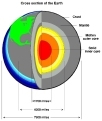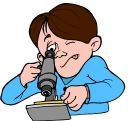
Worksheets and No Prep Teaching Resources
Reading Comprehension Worksheets
Earth
Weather

Earth
 Worksheets and No Prep Teaching Resources Reading Comprehension Worksheets Earth Weather |
 Earth |
| edHelper's suggested reading level: | high interest, readability grades 5 to 6 | |
| Flesch-Kincaid grade level: | 4.76 |
|
What Is the Atmosphere?
By Patti Hutchison |

|
 1 Earth, air, water, and fire. The ancient Greeks thought these were the basic elements. They believed these could not be broken down into parts. Today, we know more about the air around us. It is made up of many gases. Together these gases make up the atmosphere. This is a layer of air above the earth. It extends into outer space.
1 Earth, air, water, and fire. The ancient Greeks thought these were the basic elements. They believed these could not be broken down into parts. Today, we know more about the air around us. It is made up of many gases. Together these gases make up the atmosphere. This is a layer of air above the earth. It extends into outer space. |
Create Weekly Reading Books
Prepare for an entire week at once! |
| Leave your feedback on What Is the Atmosphere? (use this link if you found an error in the story) |
 |
Earth
|
 |
Weather
|
 |
Special Education Science Materials for Teachers
|
 |
Science
|